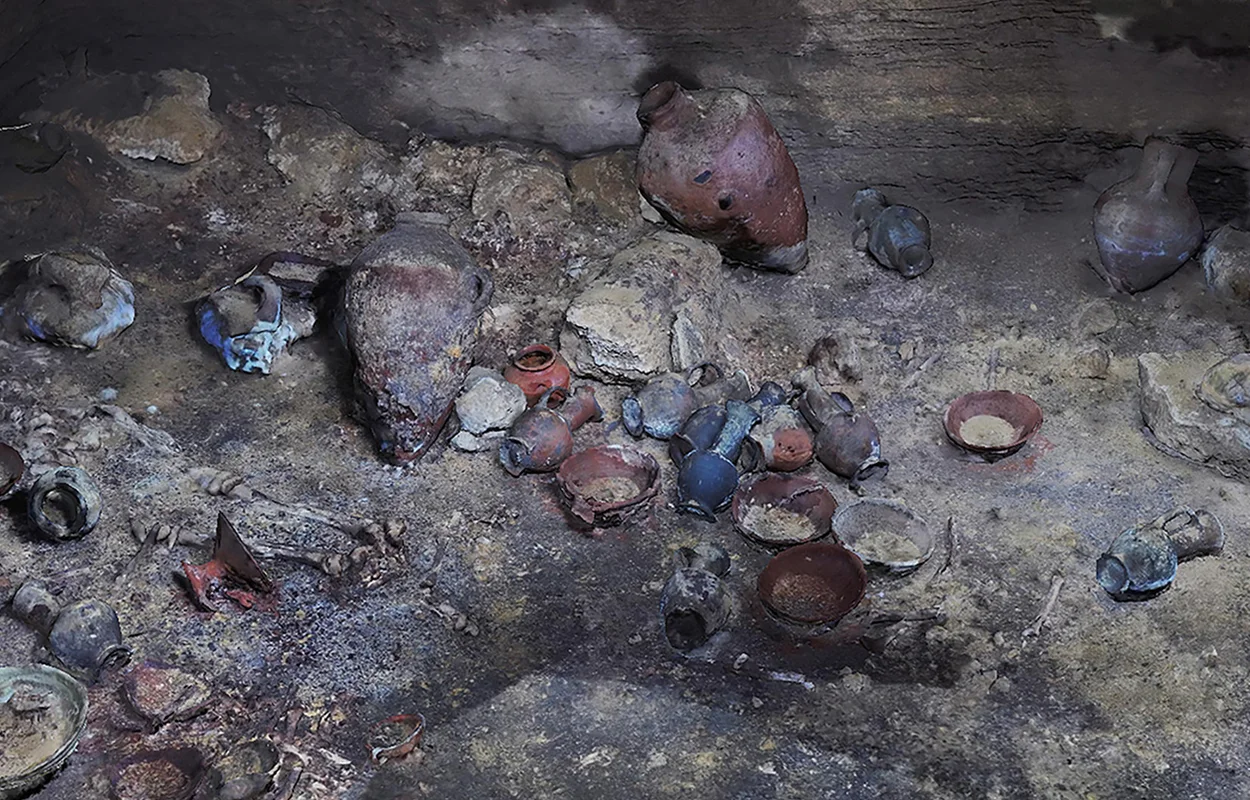Archaeologists have announced the discovery of a Bronze Age burial complex during excavations at Israel’s coastal port of Yavneh-Yam.
The discovery, published in the journal Antiquity, is a monumental rock-cut tomb linked to the Ancient Egyptian port of Muḫḫazu around 3,300-years-ago.
The tomb was first discovered by accident during development works near Palmachim Beach, a natural rocky bay with sandy stretches that encompasses the multi-period archaeological site of Yavneh-Yam.
Excavations have been conducted by the Israel Antiquities Authority (IAA), revealing a large square shaped chamber measuring 6.5 metres in diameter, carved into the sandstone outcrop with a central supporting pillar. Inside, the remains of at least ten individuals were found alongside a wealth of grave goods.
Among the more than 140 ceramic vessels were locally made storage jars and imported wares from Cyprus and the Aegean, such as Cypriot Base Ring jugs, White Slip bowls, and Late Helladic cups.
A organic residue analysis has identified food offerings of fish, sheep and goat limbs, and plant materials placed beside the dead, clear evidence of ritual feasting associated with burial ceremonies.
One particularly striking find was a scarab bearing the cartouche of Pharaoh Thutmose III, hinting at Egyptian administrative or symbolic ties. The chamber’s careful architecture — featuring a carved façade, arched entrance, and symmetrical layout — suggests a high level of engineering skill and substantial investment, characteristics normally reserved for elite individuals.
“This is one of the most complete and undisturbed Late Bronze Age tombs ever found in Canaan,” the Antiquity authors report. “Its scale and wealth reflect the existence of a local ruling class connected to the port’s administration and long-distance maritime trade.”
Outside the main chamber, archaeologists also identified ash layers, animal bones, cooking pots, and a stone-lined pit — believed to be the remains of funeral feasts performed at the time of burial. Such direct evidence of Canaanite mortuary rituals is exceptionally rare.
Ongoing scientific analysis of residues, human remains, and imported artifacts aims to reconstruct the lives and networks of those buried within the tomb. Researchers hope the discovery will deepen understanding of how Egyptian imperial control, maritime commerce, and local elite power intertwined along Israel’s southern coast during the turbulent Amarna period.
Header Image Credit : Antiquity
Sources : Antiquity – https://doi.org/10.15184/aqy.2025.10204





